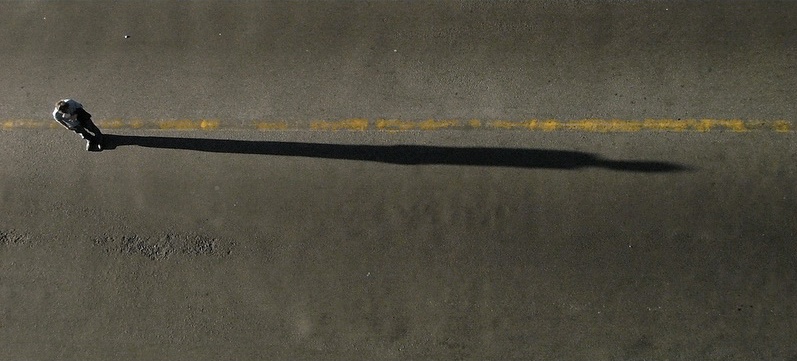Archive for the ‘Level 5 Courage’ Category
Top Innovation Blogger of 2014
 Innovation Excellence announced their top innovation bloggers of 2014, and, well, I topped the list!
Innovation Excellence announced their top innovation bloggers of 2014, and, well, I topped the list!
The list is full of talented, innovative thinkers, and I’m proud to be part of such a wonderful group. I’ve read many of their posts and learned a lot. My special congratulations and thanks to: Jeffrey Baumgartner, Ralph Ohr, Paul Hobcraft, Gijs van Wulfen, and Tim Kastelle.
Honors and accolades are good, and should be celebrated. As Rick Hanson knows (Hardwiring Happiness) positive experiences are far less sticky than negative ones, and to be converted into neural structure must be actively savored. Today I celebrate.
Writing a blog post every week is challenge, but it’s worth it. Each week I get to stare at a blank screen and create something from nothing, and each week I’m reminded that it’s difficult. But more importantly I’m reminded that the most important thing is to try. Each week I demonstrate to myself that I can push through my self-generated resistance. Some posts are better than others, but that’s not the point. The point is it’s important to put myself out there.
With innovative work, there are a lot of highs and lows. Celebrating and savoring the highs is important, as long as I remember the lows will come, and though there’s a lot of uncertainty in innovation, I’m certain the lows will find me. And when that happens I want to be ready – ready to let go of the things that don’t go as expected. I expect thinks will go differently than I expect, and that seems to work pretty well.
I think with innovation, the middle way is best – not too high, not too low. But I’m not talking about moderating the goodness of my experiments; I’m talking about moderating my response to them. When things go better than my expectations, I actively hold onto my good feelings until they wane on their own. When things go poorly relative to my expectations, I feel sad for a bit, then let it go. Funny thing is – it’s all relative to my expectations.
I did not expect to be the number one innovation blogger, but that’s how it went. (And I’m thankful.) I don’t expect to be at the top of the list next year, but we’ll see how it goes.
For next year my expectations are to write every week and put my best into every post. We’ll see how it goes.
To improve innovation, improve clarity.
 If I was CEO of a company that wanted to do innovation, the one thing I’d strive for is clarity.
If I was CEO of a company that wanted to do innovation, the one thing I’d strive for is clarity.
For clarity on the innovative new product, here’s what the CEO needs.
Valuable Customer Outcomes – how the new product will be used. This is done with a one page, hand sketched document that shows the user using the new product in the new way. The tool of choice is a fat black permanent marker on an 81/2 x 11 sheet of paper in landscape orientation. The fat marker prohibits all but essential details and promotes clarity. The new features/functions/finish are sketched with a fat red marker. If it’s red, it’s new; and if you can’t sketch it, you don’t have it. That’s clarity.
The new value proposition – how the product will be sold. The marketing leader creates a one page sales sheet. If it can’t be sold with one page, there’s nothing worth selling. And if it can’t be drawn, there’s nothing there.
Customer classification – who will buy and use the new product. Using a two column table on a single page, these are their attributes to define: Where the customer calls home; their ability to pay; minimum performance threshold; infrastructure gaps; literacy/capability; sustainability concerns; regulatory concerns; culture/tastes.
Market classification – how will it fit in the market. Using a four column table on a single page, define: At Whose Expense (AWE) your success will come; why they’ll be angry; what the customer will throw way, recycle or replace; market classification – market share, grow the market, disrupt a market, create a new market.
For clarity on the creative work, here’s what the CEO needs: For each novel concept generated by the Innovation Burst Event (IBE), a single PowerPoint slide with a picture of its thinking prototype and a word description (limited to 12 words).
For clarity on the problems to be solved the CEO needs a one page, image-based definition of the problem, where the problem is shown to occur between only two elements, where the problem’s spacial location is defined, along with when the problem occurs.
For clarity on the viability of the new technology, the CEO needs to see performance data for the functional prototypes, with each performance parameter expressed as a bar graph on a single page along with a hyperlink to the robustness surrogate (test rig), test protocol, and images of the tested hardware.
For clarity on commercialization, the CEO should see the project in three phases – a front, a middle, and end. The front is defined by a one page project timeline, one page sales sheet, and one page sales goals. The middle is defined by performance data (bar graphs) for the alpha units which are hyperlinked to test protocols and tested hardware. For the end it’s the same as the middle, except for beta units, and includes process capability data and capacity readiness.
It’s not easy to put things on one page, but when it’s done well clarity skyrockets. And with improved clarity the right concepts are created, the right problems are solved, the right data is generated, and the right new product is launched.
And when clarity extends all the way to the CEO, resources are aligned, organizational confusion dissipates, and all elements of innovation work happen more smoothly.
Image credit – Kristina Alexanderson
The Prerequisites for Greatness
 There are three prerequisites for greatness.
There are three prerequisites for greatness.
- You have to believe greatness is possible.
- You have to believe greatness is worth it.
- You have to believe you’re worthy of the journey.
If you can’t see old things in new ways, see new things in new ways, or see what’s missing, you won’t believe greatness is possible. To believe greatness is possible, you have to change your perspective.
Greatness is an uphill battle on all fronts, and to push through the pain requires weapons grade belief that it’s worth it. But the power isn’t in the payoff. The power is the personal meaning you attach to the work. Your slog toward greatness is powered from the inside out.
Here’s the tough one – you’ve got to believe you’re worthy of the journey. At every turn the status quo will kick you in the shins, and you must strap on your self-worth like shin guards. And when it’s time to conger greatness from gravel, you must believe, somehow, your life force will rise to the occasion. But, to be clear, you don’t have to believe you’ll be successful; you only have to believe you’re worth the bet.
From the outside, greatness is all about the work. But from the inside, greatness is all about you.
Image credit – Dietmar Temps
What’s your innovation intention?
 If you want to run a brainstorming session to generate a long list of ideas, I’m out. Brainstorming takes the edge off, rounds off the interesting corners and rubs off any texture. If you want me to go away for a while and come back with an idea that can dismantle our business model, I’m in.
If you want to run a brainstorming session to generate a long list of ideas, I’m out. Brainstorming takes the edge off, rounds off the interesting corners and rubs off any texture. If you want me to go away for a while and come back with an idea that can dismantle our business model, I’m in.
If you can use words to explain it, don’t bother – anything worth its salt can’t be explained with PowerPoint. If you need to make a prototype so others can understand, you’ve got my attention.
If you have to ask my permission before you test out an idea that could really make a difference, I don’t want you on my team. If you show me a pile of rubble that was your experiment and explain how, if it actually worked, it could change the game, I’ll run air cover, break the rules, and jump in front of the bullets so you can run your next experiments, whatever they are.
If you load me up to with so many projects I can’t do several I want, you’ll get fewer of yours. If you give me some discretion and a little slack to use it, you’ll get magic.
If, before the first iteration is even drawn up, you ask me how much it will cost, I will tell you what you want to hear. If, after it’s running in the lab and we agree you’ll launch it if I build it, I won’t stop working until it meets your cost target.
If there’s total agreement it’s a great idea, it’s not a great idea, and I’m out. If the idea is squashed because it threatens our largest, most profitable business, I’m in going to make it happen before our competitors do.
If twice you tell me no, yet don’t give me a good reason, I’ll try twice as hard to make a functional prototype and show your boss.
To do innovation, real no-kidding innovation, requires a different mindset both to do the in-the-trenches work and to lead it. Innovation isn’t about following the process and fitting in, it’s about following your instincts and letting it hang out. It’s about connecting the un-connectable using the most divergent thinking. And contrary to belief, it’s not in-the-head work, it’s a full body adventure.
Innovation isn’t about the mainstream, it’s about the fringes. And it’s the same for the people that do the work. But to be clear, it’s not what it may look like at the surface. It’s not divergence for divergence’s sake and it’s not wasting time by investigating the unjustified and the unreasonable. It’s about unique people generating value in unique ways. And at the core it’s all guided by their deep intention to build a resilient, lasting business.
image credit: Chris Martin.
Your money or your time, which is worth more?
 If you were given a choice – for the same number of hours worked you get 20% more money, or for 20% fewer hours worked you get the same money – which would you choose?
If you were given a choice – for the same number of hours worked you get 20% more money, or for 20% fewer hours worked you get the same money – which would you choose?
In real life it would not go that way, but set that aside for a moment. It’s a thought experiment, a choice between theoretical options as it assumes you’ll actually work the same hours for the extra money and assumes you’ll actually work less and get paid the same. If you actually had the choice, which would you choose?
To me it comes down to two questions: If you had more money, what would you actually do with it? And, if you had more free time, what would you actually do with it? But these questions aren’t theoretical. No kidding, with your current lifestyle, with your existing priorities, with how you live your life, what would you do with more money and what would you do with more time?
With more money, would you pay off some bills, buy some new stuff, save for college, go on vacation, donate to charity? With the money some well-worn options come quickly to mind. Would 20% more money make a substantial difference in your life, or would you slowly ratchet up your spending so the extra money is no longer extra, but essential?
With more time, what would you do? What are the top three that jump immediately into your brain? I think this one’s tougher. If instead of five days a week you worked four, what would that day off look like? If you had every Friday off (in addition to your existing vacation days), what would you do? Sure, for the first four Fridays you’d catch up on your sleep, but then what? The time-money seesaw is so lopsided, we don’t know even how to think about this.
I think the best use of your extra time would be to figure out what to do with your extra time. What if on your fifth Friday, with your sleep deficit behind you, you did nothing? I mean nothing in the true sense – you get up at your regular time, eat breakfast, shower up, and do nothing. I mean eight hours with no electronics, no laptop, no video games, no TV, no books, no phones, where it’s just you and your tedious thoughts? Actually, I think that would be too much time with yourself, and one hour a week would be enough to set you on your path.
Before you can decide what you’d do with your extra time, you have to figure out what you want from life and why you want it. And to do that, you need to allocate a regular time to sit and do nothing. And you don’t even have to think about what you want and why you want it. If you sit, it will find you.
Truth is you don’t need an extra day off every week to carve out an hour and sit quietly. But if you do sit quietly you will figure out what you want out of life and why you want it and then you will come up with some wonderful new ways to spend your time. And because those wonderful new things will be deeply grounded in what you want out of your life – you’ll create the time to actually do them.
We’re clear what our money will buy, but less clear on what our time is worth. You’re one hour away from tipping the balance and clearing things up.
If it’s not different, it’s not innovation.
 Creative products are novel and useful; Innovative products are novel, useful, and successful. Beforehand, it’s impossible to know if something will be successful, but if it’s useful there’s a chance it could be; beforehand, it’s subjective whether something will be useful, but if it’s novel there’s a chance; but no one is sure what novel means, so replace it with “different” and you’re onto something. It’s clear if something is different, and if it’s different, there’s a chance it could be creative and innovative. Said another way,
Creative products are novel and useful; Innovative products are novel, useful, and successful. Beforehand, it’s impossible to know if something will be successful, but if it’s useful there’s a chance it could be; beforehand, it’s subjective whether something will be useful, but if it’s novel there’s a chance; but no one is sure what novel means, so replace it with “different” and you’re onto something. It’s clear if something is different, and if it’s different, there’s a chance it could be creative and innovative. Said another way,
if something isn’t different it cannot be creative, nor can it be innovative.
If you can generate more things that are different, you’ve increased your chances of creativity and innovation. And if you generate more ideas that are different, you’ll create more things that are different. Go on a quest to create more ideas that are different and you’ll have more creativity and innovation.
Ideas that are different come from the firing of different neural pathways. And to get different pathways to fire, you’ve got to first recognize when the old ones are firing. To do this, you’ve got to be aware of your worn pathways and be aware you’re reusing the overused. A different environment is needed – an environment that governs speed. If you have a culture of speed and productivity, this will be different. It doesn’t matter what the different environment is, it matters what it isn’t.
Different ideas result from the collision of old ideas seen from a new perspective. Put different people together who have different old ideas and different perspectives and different ideas will grow from the collisions. There’s no recipe for the exact distribution of people, but if you don’t put them together now, then those are them.
And to break new neural pathways, the environment in which ideas should be different. Again, there’s no prescription for the type of space or the furniture, just that it’s different. If the engine that creates the old ideas lives in an ordered space, make the different one disordered; if there’s carpet all around, lay down some linoleum; if there’s no art on the corporate walls, hang some; if the furniture matches across the teams, make it a clustered-jumble of mismatched pieces. The general approach: whatever it looks like and feels like where the same ideas are regurgitated day-in-day-out, do the opposite.
And to attract different colliders and their ideas, provide something different in the different space. If your regular coffee is terrible, the different coffee should be amazing; where people queue up to use the same tired tools, provide too many seats of the newest and best; where low fat, low calorie, responsible food is doled out in reasonable portions, provide free (and unlimited) access to irresponsible junk food.
Creativity and innovation start with different.
Image credit: quinet.
Inspiration, Imagination, and Innovation – in that order.
 Inspiration is the fuel for imagination and imagination is the power behind innovation.
Inspiration is the fuel for imagination and imagination is the power behind innovation.
All companies want innovation and try lots of stuff to increase its supply. But innovation isn’t a thing in itself and not something to be conjured from air – it’ a result of something. The backplane of innovation, its forcing function, is imagination.
But imagination is no longer a sanctioned activity. Since it’s not a value-added activity; and our financial accounting system has no column for it; and it’s unpredictable, it has been leaned out of our work. (Actually, she’s dead – Imagination’s Obituary.) We squelch imagination yet demand more innovation. That’s like trying to make ice cream without the milk.
No inspiration, no imagination – that’s a rule. Again, like innovation, imagination isn’t a thing in itself, it’s a result of something. If you’re not inspired you don’t have enough mojo to imagine what could be. I’ve seen many campaigns to increase innovation, but none to bolster imagination, and fewer to foster inspiration. (To be clear, motivation is not a substitute for inspiration – there are plenty of highly motivated, uninspired folks out there.)
If you want more innovation, it’s time to figure out how to make it cool to openly demonstrate imagination. (Here’s a hint – dust off your own imagination and use it. Others will see your public display and start to see it as sanctioned behavior.) And if you want more imagination, it’s time demonstrate random acts of inspiration.
Inspiration feeds imagination and imagination breeds innovation. And the sequence matters.
Image credit – AndYaDontStop
Put Yourself Out There
 Put yourself out there. Let it hang out. Give it a try. Just do it. The reality is few do it, and fewer do it often. But why?
Put yourself out there. Let it hang out. Give it a try. Just do it. The reality is few do it, and fewer do it often. But why?
In a word, fear. But it cuts much deeper than a word. Here’s a top down progression:
What will they think of your idea? If you summon the courage to say it out loud, your fear is they won’t like it, or they’ll think it’s stupid. But it goes deeper.
What with they think of you? If they think your idea is stupid, your fear is they’ll think you’re stupid. But so what?
How will it conflict with what you think of you? If they think you’re stupid, your fear is it will conflict with what you think of you. Now we’re on to it – full circle.
What do you think of you? It all comes down to your self-image – what you think is it and how you think it will stand up against the outside forces trying to pull it apart. The key is “what you think” and “how you think”. Like all cases, perception is reality; and when it comes to judging ourselves, we judge far too harshly. Our severe self-criticism deflates us far below the waterline of reality, and we see ourselves far shallower than our actions decree.
You’re stronger and more capable than you let yourself think. But no words can help with that; for that, only action will do. Summon the courage to act and take action. Just do it. And to calm yourself before you jump, hold onto this one fact – others’ criticism has never killed anyone. Stung, yes. Killed, no. Plain and simple, you won’t die if you put yourself out there. And even the worst bee stings subside with a little ice.
I’m not sure why we’re so willing to abdicate responsibility for what we think of ourselves, but we do. So where you may have abdicated responsibility in the past, in the now it’s time to take responsibility. It’s time to take responsibility and act on your own behalf.
Fear is real, and you should acknowledge it. But also acknowledge you give fear its power. Feel the fear, be afraid. But don’t succumb to the power you give it.
Put yourself out there. Do it tomorrow. You won’t die. And I bet you’ll surprise others.
But I’m sure you’ll surprise yourself more.
How Things Really Happen
From the outside it’s unclear how things happen; but from the inside it’s clear as day. No, it’s not your bulletproof processes; it’s not your top down strategy; and it’s not your operating plans. It’s your people.
At some level everything happens like this:
An idea comes to you that makes little sense, so you drop it. But it comes again, and then again. It visits regularly over the months and each time reveals a bit of its true self. But still, it’s incomplete. So you walk around with it and it eats at you; like a parasite, it gets stronger at your expense. Then, it matures and grows its voice – and it talks to you. It talks all the time; it won’t let you sleep; it pollutes you; it gets in the way; it colors you; and finally you become the human embodiment of the idea.
And then it tips you. With one last push, it creates enough discomfort to roll over the fear of acknowledging its existence, and you set up the meeting.
You call the band and let them know it’s time again to tour. You’ve been through it before and you all know deal. You know your instruments and you know how to harmonize. You know what they can do (because they’ve done it before) and you trust them. You sing them the song of your idea and they listen. Then you ask them to improvise and sing it back, and you listen. The mutual listening moves the idea forward, and you agree to take a run at it.
You ask how it should go. The lead vocalist tells you how it should be sung; the lead guitar works out the fingering; the drummer beats out the rhythm; and the keyboardist grins and says this will be fun. You all know the sheet music and you head back to your silos to make it happen.
In record time, the work gets done and you get back together to review the results. As a group you decide if the track is good enough play in public. If it is, you set up the meeting with a broader audience to let them hear your new music. If it’s not, you head back to the recording studio to amplify what worked and dampen what didn’t. You keep re-recording until your symphony is ready for the critics.
Things happen because artists who want to make a difference band together and make a difference. With no complicated Gantt chart, no master plan, no request for approval, and no additional resources, they make beautiful music where there had been none. As if from thin air, they create something from nothing. But it’s not from thin air; it’s from passion, dedication, trust, and mutual respect.
The business books over-complicate it. Things happen because people make them happen – it’s that simple.
The Ladder Of Your Own Making
 There’s a natural hierarchy to work. Your job, if you choose to accept it is to climb the ladder of hierarchy rung-by-rung. Here’s how to go about it:
There’s a natural hierarchy to work. Your job, if you choose to accept it is to climb the ladder of hierarchy rung-by-rung. Here’s how to go about it:
Level 1. Work you can say no to – Say no to it. Say no effectively as you can, but say it. Saying no to level 1 work frees you up for the higher levels.
Level 2. Work you can get someone else to do – Get someone else to do it. Give the work to someone who considers the work a good reach, or a growth opportunity. This isn’t about shirking responsibility, it’s about growing young talent. Maybe you can spend a little time mentoring and the freed up time doing higher level work. Make sure you give away the credit so next time others will ask you for the opportunity to do this type of work for you.
Level 3. Work you’ve done before, but can’t wiggle out of – Do it with flair, style, and efficiency; do it differently than last time, then run away before someone asks you to do it again. Or, do it badly so next time they ask someone else to do it. Depending on the circumstance, either way can work.
Level 4. Work you haven’t done before, but can’t wiggle out of – Come up with a new recipe for this type of work, and do it so well it’s unassailable. This time your contribution is the recipe; next time your contribution is to teach it to someone else. (See level 2.)
Level 5. Work that scares others – Figure out why it scares them; break it into small bites; and take the smallest first bite (so others can’t see the failure). If it works, take a bigger bite; if it doesn’t, take a different smallest bite. Repeat, as needed. Next time, since you’ve done it before, treat it like level 3 work. Better still, treat it like level 2.
Level 6. Work that scares you – Figure out why it scares you, then follow the steps for level 5.
Level 7. Work no one knows to ask you to do – You know your subject matter better than anyone, so figure out the right work and give it a try. This flavor is difficult because it comes at the expense of work you’re already signed up to do and no one is asking you to do it. But you should have the time because you followed the guidance in the previous levels.
Level 8. Work that obsoletes the very thing that made your company successful – This is rarified air – no place for the novice. Ultimately, someone will do this work, and it might as well be you. At least you’ll be able to manage the disruption on your own terms.
In the end, your task, if you choose to accept it, is to migrate toward the work that obsoletes yourself. For only then can you start back at level 1 on the ladder of your own making.
Summoning The Courage To Ask
I’ve had some great teachers in my life, and I’m grateful for them. They taught me their hard-earned secrets, their simple secrets. Though each had their own special gifts, they all gave them in the same way – they asked the simplest questions.
Today’s world is complex – everything interacts with everything else; and today’s pace is blistering – it’s tough to make time to understand what’s really going on. To battle the complexity and pace, force yourself to come up with the simplest questions. Here are some of my favorites:
For new products:
- Who will buy it?
- What must it do?
- What should it cost?
For new technologies:
- What problem are you trying to solve?
- How will you know you solved it?
- What work hasn’t been done before?
For new business models:
- Why are you holding onto your decrepit business model?
For problems:
- Can you draw a picture of it on one page?
- Can you make it come and go?
For decisions:
- What is the minimum viable test?
- Why not test three or four options at the same time?
For people issues:
- Are you okay?
- How can I help you?
For most any situation:
- Why?
These questions are powerful because they cut through the noise, but their power couples them to fear and embarrassment – fear that if you ask you’ll embarrass someone. These questions have the power to make it clear that all the activity and hype is nothing more than a big cloud of dust heading off in the wrong direction. And because of that, it’s scary to ask these questions.
It doesn’t matter if you steal these questions directly (you have my permission), twist them to make them your own, or come up with new ones altogether. What matters is you spend the time to make them simple and you summon the courage to ask.
Image credit — Montecruz Foto.


 Mike Shipulski
Mike Shipulski